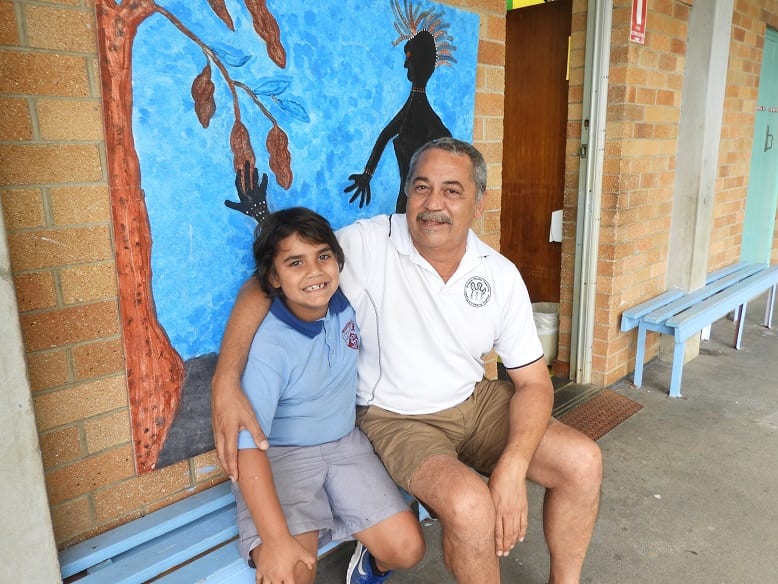Menu
Jan
31
2018
By Janet Grist
It is well documented that pride in our identity and a sense of belonging are critical to health and wellbeing. It is exciting to learn that an integral part of the Aboriginal community’s identity – the learning of Indigenous languages – will become easier to access in both schools and community organisations throughout NSW.
In October last year the NSW Parliament passed landmark legislation that recognises and aims to revive Indigenous languages for the first time in Australia’s history.
As part of the new legislation the NSW Government will appoint an independent panel of Aboriginal language experts and establish a new languages centre.
About 1800 people speak Aboriginal languages in NSW and on the North Coast one primary school has a long and proud history of teaching Aboriginal language.
I visited Goonellabah Public School and spoke to Glen Rhodes, a teacher in the Bundjalung Language and Culture Nest there to find out the history of language teaching there and what the new legislation will mean.
Glen explained that 30 years ago the late Uncle Mick Walker began sharing his wisdom and language at the school.
“There were a few people who collated all this language information and made up some resources to teach language. All of it was here when I arrived at the school and I’ve kept it and still use some of it today.”
Glen showed me some of these older resources including an old exercise book of a student who studied Basic Bundjalung at the school about 20 years ago. It was fascinating to leaf through the pages and see the drawings that accompanied the text.
Glen said that the language teaching began with lists of words and then signs were made and placed around the schools in language and the momentum grew from there.
Basic Bundjalung is taught to all the students of Goonellabah Public School. About half of its students are Aboriginal. Enthusiasm to learn language is so strong that Glen has three schools waiting for Aboriginal language students to teach their pupils.
Glen is excited about the potential impact of the new legislation.
“It’s possible that before long anyone in the community will have access to learning the local Aboriginal dialect, which would be provided through community organisations.”
Glen said becoming immersed in their own language gives Indigenous students a sense of their identity and a sense of pride, which in turn has a positive effect on their wellbeing.
“Some kids don’t even know who their family or community are. I was talking to a Year 2 class a few weeks ago and I was talking about my grandfather and the Protection Era and the fact that he needed permission to leave Cabbage Tree Island to work on the railway for about 40 years. I had a photo of my grandfather in the middle of the display. And this little boy got up and said ‘Yea, my pop told me about living in Moree where they weren’t allowed to swim in Moree Baths.
“So this boy had all the cultural knowledge within him and this gave him an opportunity to say who he was. But when he got the opportunity to talk about his Pop he just beamed. And after I finished another teacher told me that that little boy was really naughty in class and that was the first time she’d seen him really engaged in conversation. These kids need to be who they are.”
Glen said he was also confident that data will show over time that Aboriginal student language outcomes are the same or better than the rest of the NSW students studying a language.

BreastScreen Bus Heading to Kempsey, Nambucca, Ocean Shores & Bellingen
Where to Find Help When Someone Has Mental Health Difficulties